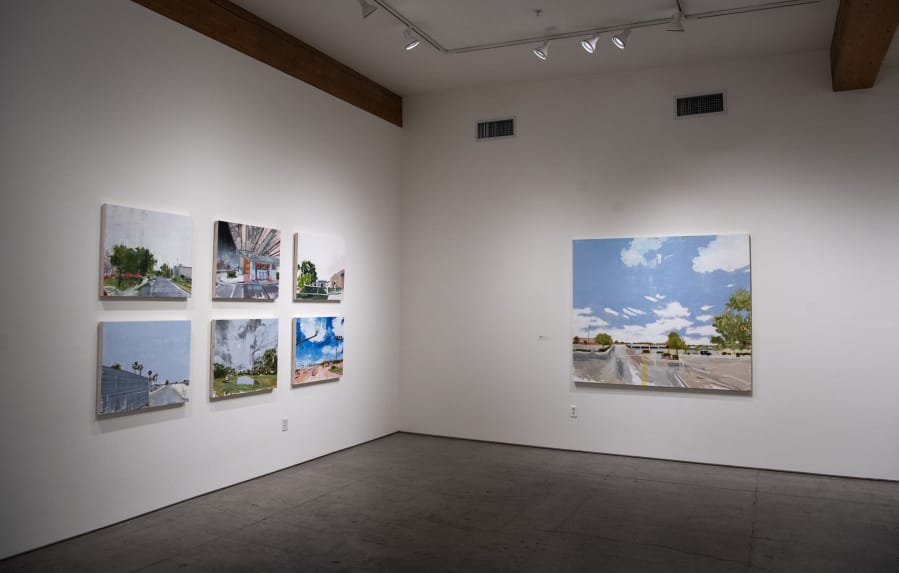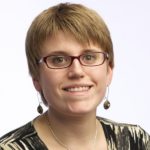Artist Stephen Hayes was preparing to speak earlier this month at a Portland gallery reception about “In the Hour Before,” his series of paintings that imagine the eerie peace before gunfire erupts at the scenes of shootings.
Just then, news broke of yet another shooting, this one across the Columbia River at Smith Tower in downtown Vancouver.
It will probably be the subject of his next painting, said Hayes, who teaches art at Clark College.
His four-year project depicting the sites of shootings in oil paints began as something else entirely.
If you go
What: Artist Stephen Hayes’ series “In the Hour Before: This Land …”
Where: Elizabeth Leach Gallery, 417 N.W. Ninth Ave., Portland.
When: Panel discussion at 11 a.m. Saturday; gallery hours 10:30 a.m. to 5 :30 p.m. Tuesdays through Saturdays; Hayes’ work is on display through Nov. 2.
Information: 503-224-0521; www.elizabethleach.com
In November 2015, Hayes was exploring the streets of Arles, France, through Google Street View, looking for the places that once inspired Vincent Van Gogh in 1888. His goal was to paint the modern sights of Arles using that image as the inspiration. Hayes did indeed make one painting of “a strikingly ordinary back alley” in the southern French city.
Then terrorists struck Paris in a series of bombings and shootings that claimed 130 lives and wounded another 494.
Stunned, Hayes pulled up the Google Street View of those locations — a cafe, a stadium, a concert hall.
“I was struck by how normal everything looked in these photos,” he said.
So he began to paint, using 21st century technology to create a sort of modern take on plein-air painting, the practice of painting outdoors. He painted Columbine High School, Sandy Hook Elementary School, and Emanuel African Methodist Episcopal Church in Charleston, S.C.
The shootings keep happening, so the paintings keep coming — Pulse nightclub, the Gilroy Garlic Festival, an El Paso Walmart.
“It’s so ubiquitous,” Hayes said.
The series so far includes 50 or so paintings. In 2018, Hayes received a prestigious Guggenheim Fellowship to continue the series.
There’s a frenetic nature to the work. Smudges, dripping paint and rag lines speckle the canvas.
He completed his painting of Parkland, Fla., a week after the Valentine’s Day 2018 shooting that claimed 17 lives. Hayes spent four days stretching the 10-foot wide canvas and three days painting.
“It has the quality of urgency and rawness,” Hayes said.
Hayes, who is originally from Washington, D.C., has been living and painting in the Northwest since 1985.
“Figure/Ground,” a book published for a 2013 exhibit of Hayes’ work at Lewis and Clark College in Portland, details the hours he’s spent plein-air painting at Sauvie Island and surrounding areas. He also has taught for years at colleges in the region, including Clark.
“It’s great to pass on the knowledge you have,” Hayes said. “If we’re going to move forward as a civilization, we have to be willing to pass that knowledge on.”
And while Hayes’ paintings typically focus on natural landscapes or portraiture, this isn’t his first inherently political body of work.
In the early 2000s, he took a series of posters for missing children, scanned and printed them onto silk screens, and manipulated the ink to create a series of portraits. Funds from sales of those portraits benefited the National Center for Missing and Exploited Children.
“I was trying to use beauty to solve a problem of horrific ugliness,” he said.
Hayes embraces that conflict in “In the Hour Before,” as well. He welcomes the idea that people can be both drawn to his work as beautiful, yet repulsed by the story of what it means.
“We still have to make room for being alive and embracing beauty,” Hayes said. “You can be respectful of the lives lost and embrace our own lives.”




